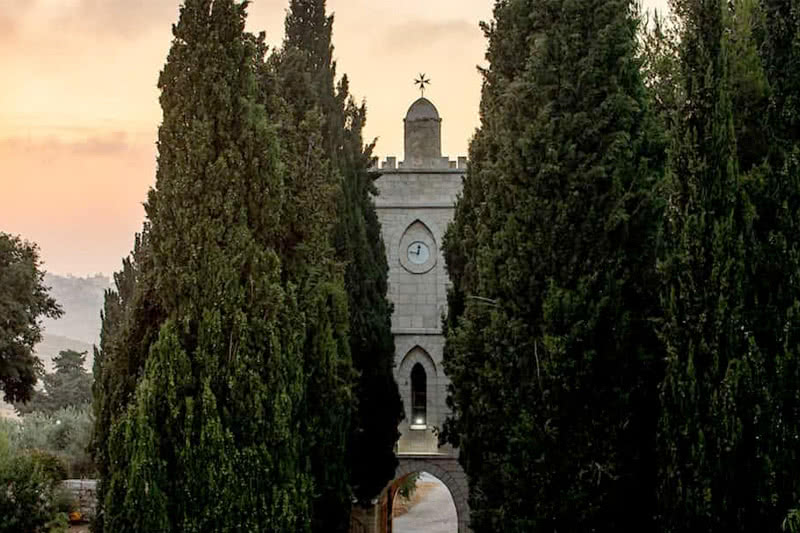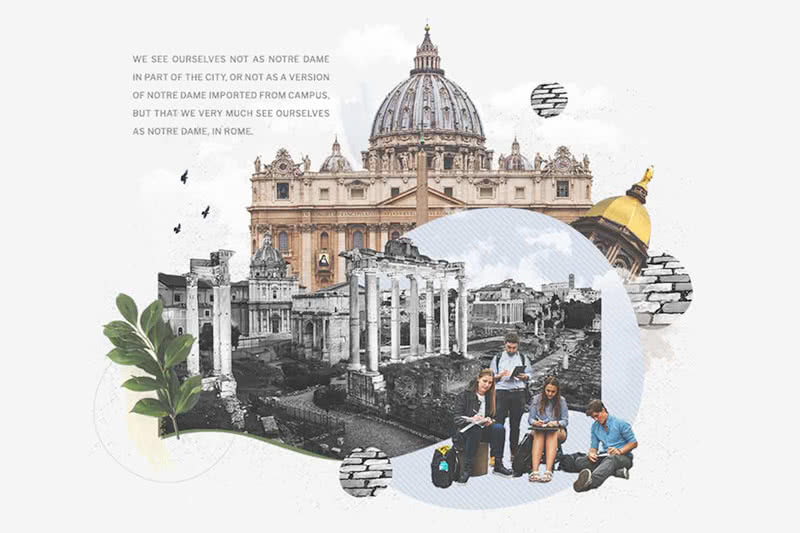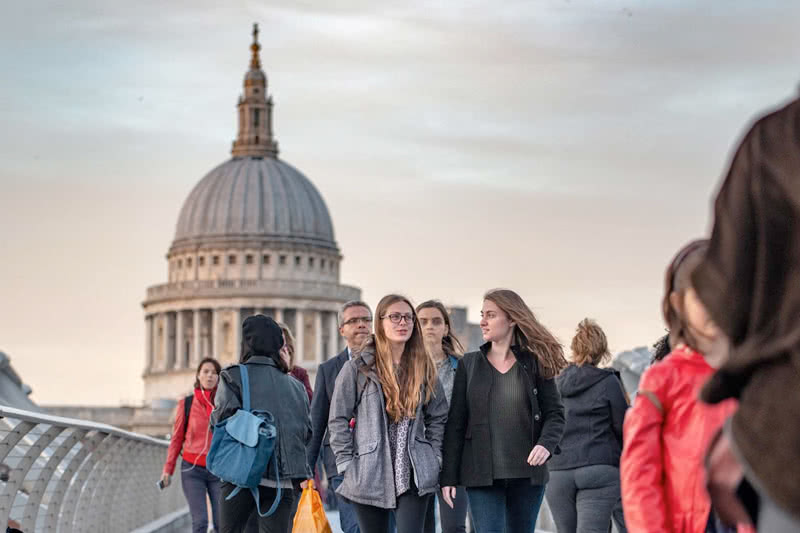There’s a good deal to unpack when it comes to Dublin’s Georgian homes.
To a visitor, they are a dominant characteristic of the city: seeming miles of row houses, block upon block, built during the period between 1714, when Britain’s King George I ascended the throne, and 1830, when King George IV’s reign ended. There are only subtle differences to distinguish where one house ends and another begins, save for one important feature — the color of the door. To an American, these scenes give Dublin a certain air of “European-ness,” and maybe more than they know; it is believed Dublin has more of these homes than any other city in the European Union because so many on the European mainland were bombed out during World War II.
The longest of these massive rows sits along the south side of Merrion Square, a shining example of Georgian urban planning built during the last half of the 18th century. Merrion Square was home to such famous residents as William Butler Yeats and Oscar Wilde, and today it’s been restored to its historical beauty.
A particular home there stands out among the uniformity. Its door is a striking shade of blue, and to the right of the door a round sign adorns its exterior wall. It reads, “Daniel O’Connell, ‘The Liberator,’ lived in this house.”
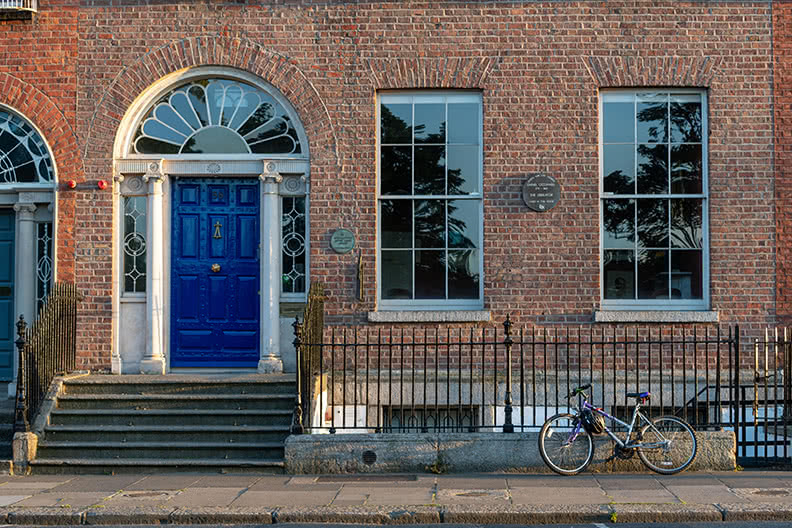
Daniel O’Connell was a lawyer and political activist who helped to break down the wall of discriminatory policies in the 18th and early 19th centuries. A champion of education and a believer in its power to effect change, O’Connell studied law with the purpose of using the British legal system to achieve equity for some of the most marginalized people of the day: Irish Catholics.
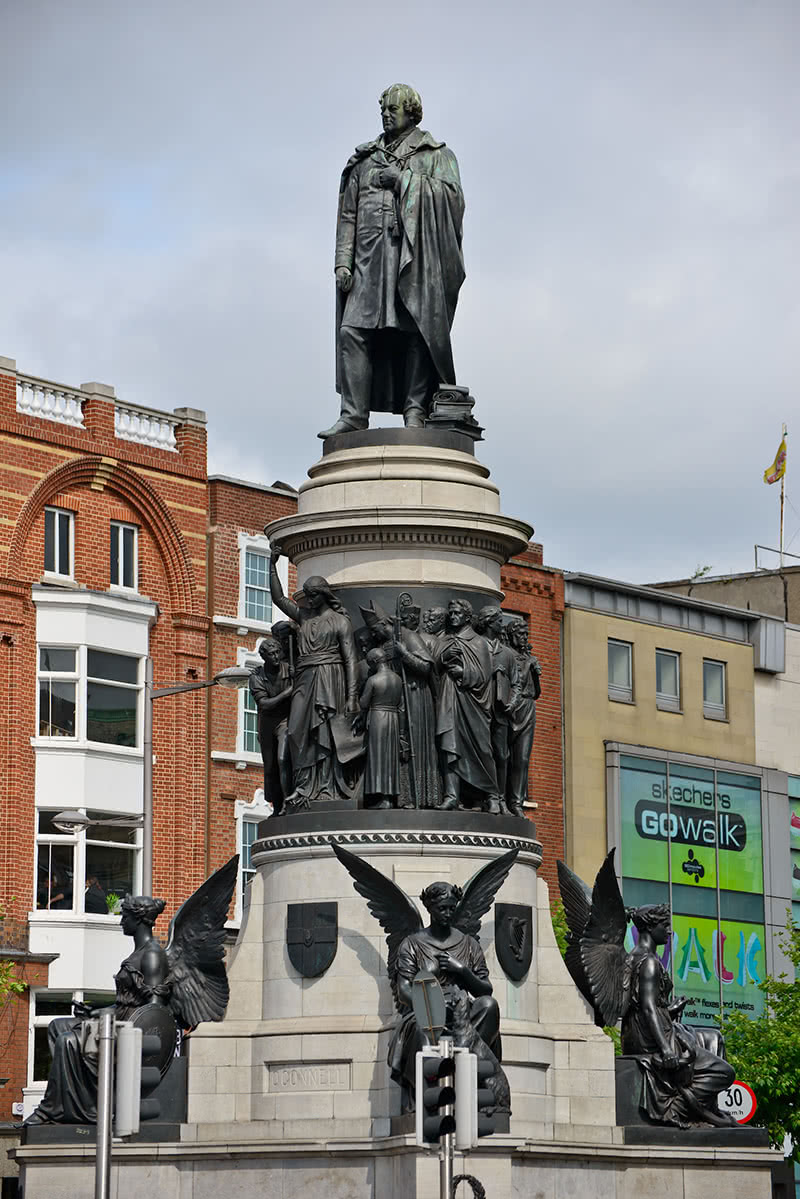
He remains a prominent figure in the Irish consciousness. A large statue memorializes him in Dublin’s city center, affixed along O’Connell Street and overlooking the O’Connell Bridge. So it is fitting, maybe poetic, that the English-style Georgian house on Merrion Square where O’Connell lived — now home to Notre Dame’s Dublin Global Gateway — would also include a tribute to The Liberator.
“Out of this very house, O’Connell launched a political campaign to force the British to change the penal laws which prevented Catholics from full participation in society,” noted Kevin Whelan, the Michael Smurfit Director of the Notre Dame Dublin Global Gateway. “He did it through the power of correspondence, and he was also a magnificent orator. He could talk and often did from the balcony here in O’Connell House. He often addressed crowds of 10,000 people out here in the square.”
Today, O’Connell House is still home to those who seek to use education to advance the human condition. And not just through the study of political science (though that’s still a part). These days, Notre Dame students of every academic discipline use the space as part of their study abroad experience, which includes classes, internships and encounters with Irish culture.
But the broad scope of the University’s presence in Ireland includes a unique outpost in the western part of the country. In this part of the island, sometimes called the cultural heart of Ireland, there are no rows of houses, no clamor of a city center. Sheep seem to outnumber people, but the lessons that await the students and scholars who spend time here deal with some of the most pressing issues facing humankind. This is Kylemore, part working Benedictine community where nuns live out their religious calling, and part mini-campus where scholarship mixes with solitude in a way that brings clarity to the educational experience and, if they let it, to the students’ lives after they leave here.
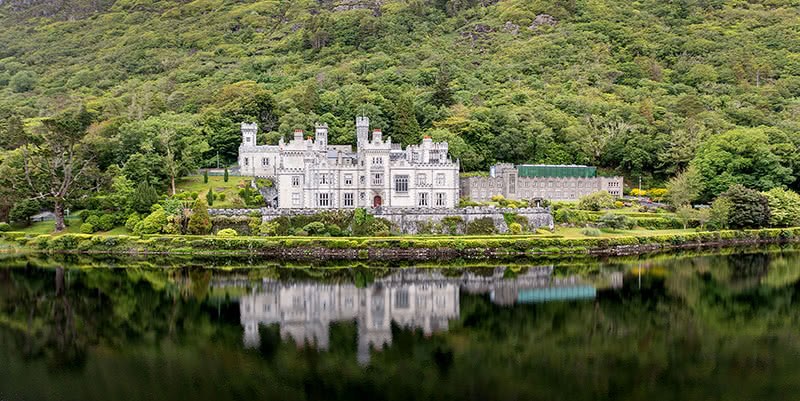
“The students who self-select to come here are up for an adventure,” said Lisa Caulfield, the executive director of the Kylemore Global Centre. “I think there’s a wonderful sort of atmosphere that’s created where there’s continual learning, but also a break from the bustle of life that can be quite distracting.
“Once I get people here, I’ve won them over,” Caulfield said.
Between Dublin and Kylemore, Notre Dame is able to offer a singular breadth of experience on the Emerald Isle that redefines the traditional meaning of a study abroad program to include cultural fluency, a way of understanding another way of life that leads to global thinking and global citizenship.
‘We’re not selling the sunset’
The University’s relationship with Ireland can be traced to its very founding, when seven Irish brothers and religious traveled with French priest Rev. Edward Sorin, C.S.C., to South Bend in the cold Indiana November of 1842. A more formal presence was established in Ireland in 1998, buoyed by some name recognition from a football game played in Dublin’s Croke Park stadium two years prior.
From the start, the program in Dublin was defined by two characteristics, Whelan said. First, it’s a hybrid program, wherein Notre Dame students live and take courses at Irish universities; second, the program introduces students to Irish culture from a decidedly non-tourist perspective.
Partnerships with Trinity College Dublin, University College Dublin and Dublin City University expose students to a European style of classroom instruction and exams. The rigor of the coursework is considerable, but by the end of their time, students will have demonstrated success in both the American and European university settings. Perhaps equally importantly, they will have experience in viewing the United States from the outside, conversing with Irish young people and answering all manner of questions about American culture and society.
“The minute [the students] open their mouths here in Dublin, people are going to say, ‘Oh, you’re an American,’” Whelan said. “And then [they] are personally responsible for the Kardashians, for Joe Biden, for Donald Trump, for whoever is causing controversy at the moment.
“From the student point of view, a lot of what they learn is in long conversations with the Irish people they’re living with.”
“From the student point of view, a lot of what they learn is in long conversations with the Irish people they’re living with. … They will often be challenged heavily on guns, politics or pop culture. It doesn’t necessarily change them fundamentally in terms of their values, but it makes them ask, ‘Why do I think this?’”
If the students are de facto ambassadors of the United States, they’re also ambassadors of Notre Dame and, in many cases, the Catholic faith. Whelan notes that the Irish who come into contact with students in and around Dublin, in either a professional context such as an internship or a social setting like a restaurant or tour, often remark on their genuine disposition and exemplary conduct. Others, especially peers, notice how faith is integrated into their identity, not in a negative or judgmental way, but in a rather natural way that informs decisions and outlook. It can be seen as a novel and useful approach to faith in Ireland, where young people in particular have an increasingly ambivalent view of the Church.
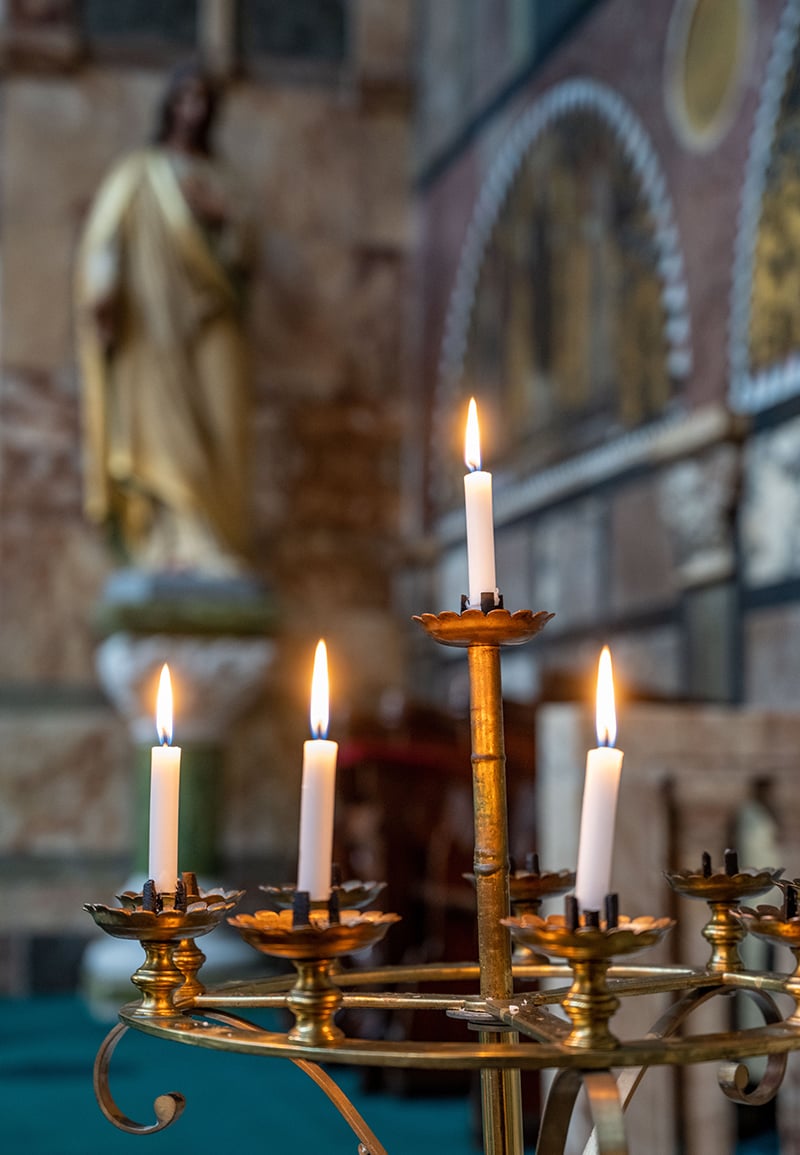
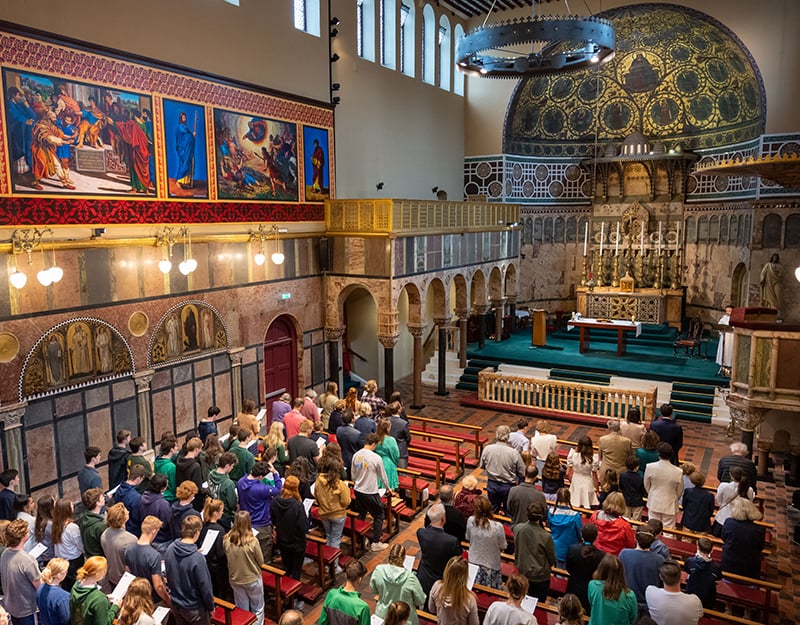
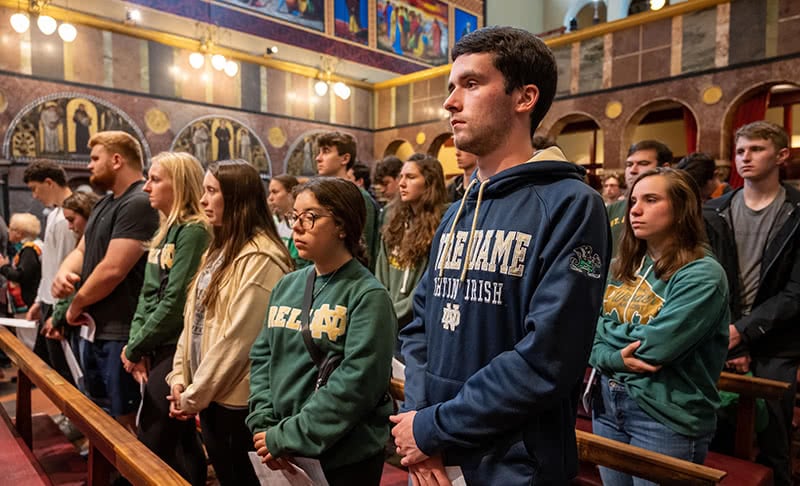
Yet the cultural education employed here is perhaps best viewed in the kinds of experiences the students encounter. “We only do things that Irish people are interested in,” Whelan said.
“We’re not going to do the touristy things. We’re going to bring you the hurling matches that are hard to get a ticket for. We’re going to bring you up to the top of mountains in the middle of nowhere. We’re going to introduce you to people that you wouldn’t be able to meet except through the connections we have. We’re going to immerse you in our society and whatever is going on in Dublin or Ireland, whatever Irish people are excited about or talking about, that’s where you’re going to be.”
Sometimes, Whelan said, that includes coming face-to-face with the complicated issues in play in Irish society. Whether it’s the legacy of The Troubles, the current problems around drugs and alcohol in Dublin, or the national debate over cutting carbon emissions to comply with European Union standards, students encounter the reality of Ireland in ways that can’t be found in a tourist brochure. “We’re not in the happiness industry,” Whelan said. “We’re not selling the sunset.”
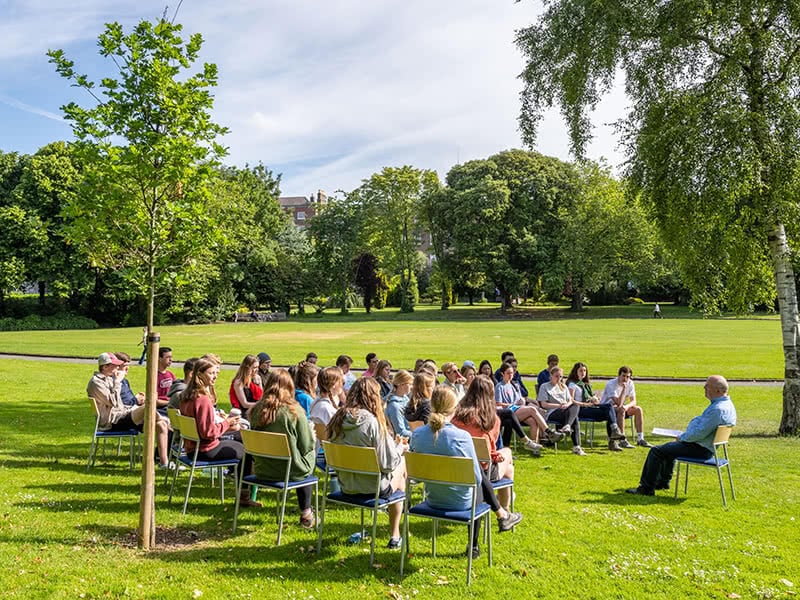
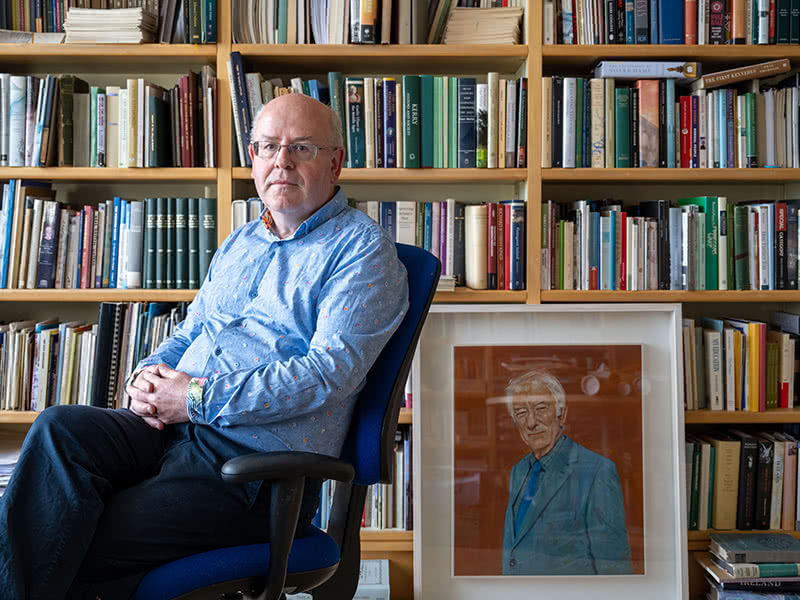
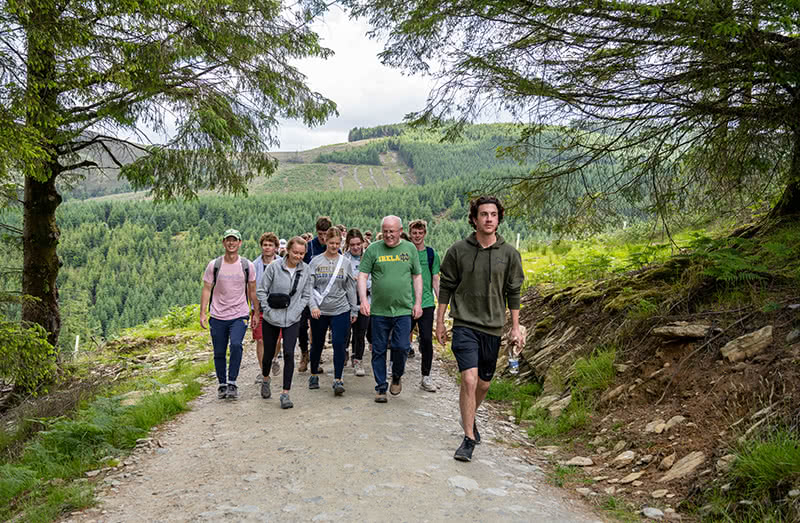
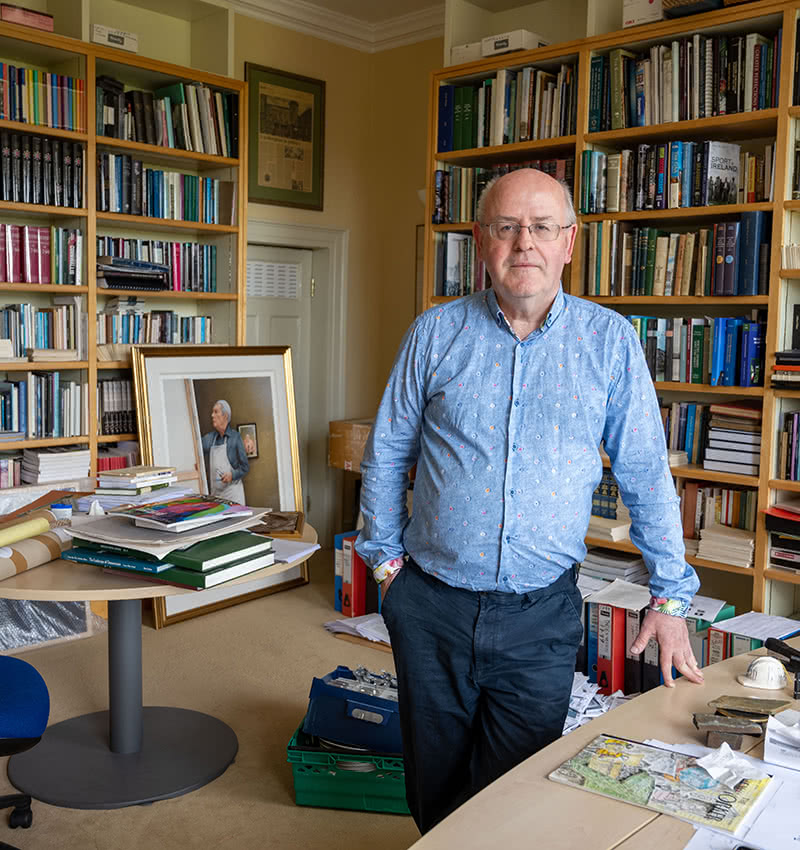
Whelan calls this approach “learning through the soles of the feet,” and it’s been shown to be an effective way of learning about Ireland as a republic and as a member of the EU. Moreover, it provides a sort of mirror by which the students can view their own country. In a final exam at the end of their time in Ireland, Whelan asks students to write about what America can learn from Ireland, and vice versa. Often students remark that their Irish peers are much more relaxed in their approach to academics. Whelan notes that’s a two-way street — perhaps Notre Dame students could stand to be a little less obsessive about their studies. But more importantly, students note the very cosmopolitan and global mindset of Irish citizens. The Irish are keenly aware of being a part of Europe and the broader global community in ways that most Americans are not. Inasmuch as the experiences made possible through the Dublin Global Gateway help to expose this deficit and increase urgency in closing the gap, O’Connell House is indeed still a place that facilitates the use of knowledge in service to justice.
“What does she of America know who only America knows?” Whelan asked in the rhetorical. “Whether we like it or not, we’re all part of a global community … and we, as a university, have a ‘duty of care’ to make sure our students are going to be good citizens of the world. We feel we are creating a more globally literate group of students.”
‘A responsibility to give back’
Yet an understanding of Ireland, and an understanding of Notre Dame’s presence there, must include a visit to the western part of the country. It is here that the lore and the lure of Ireland are in full effect, where mystique and charm cover the land as completely as the lush green of the rolling hills and thick fog of the morning.
Nestled in this landscape is Kylemore Abbey, a stately manor house in picturesque Connemara, completed in the 1860s as the home of home of Margaret and Mitchell Henry, a wealthy British couple. Mitchell was of Irish descent, and built Kylemore as a token of his love for his wife. The estate changed hands once before it was eventually turned over to a community of Benedictine nuns fleeing Ypres, Belgium, during World War I. The order has been located here ever since, living out its calling to “ora et labora” (“pray and work”) as part of the world’s oldest monastic tradition.
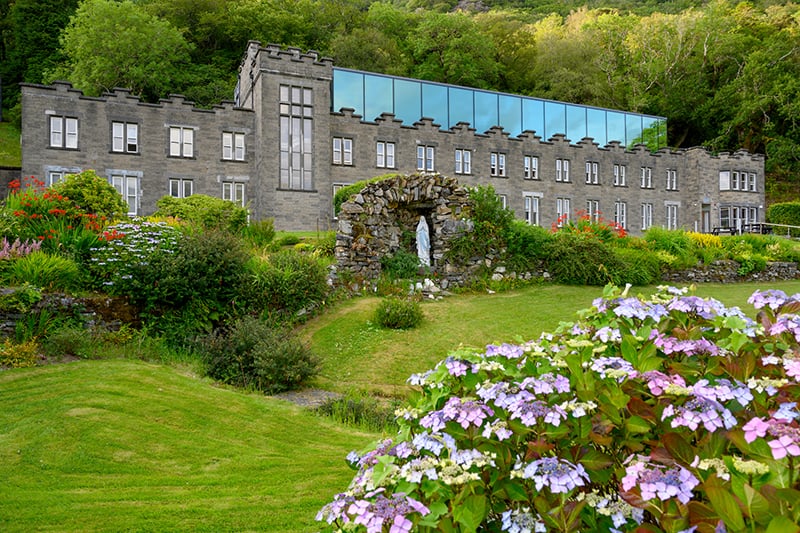
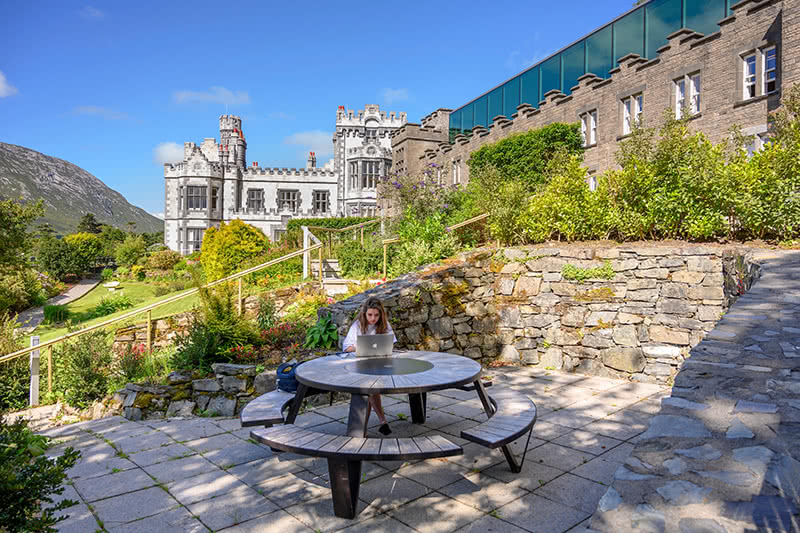
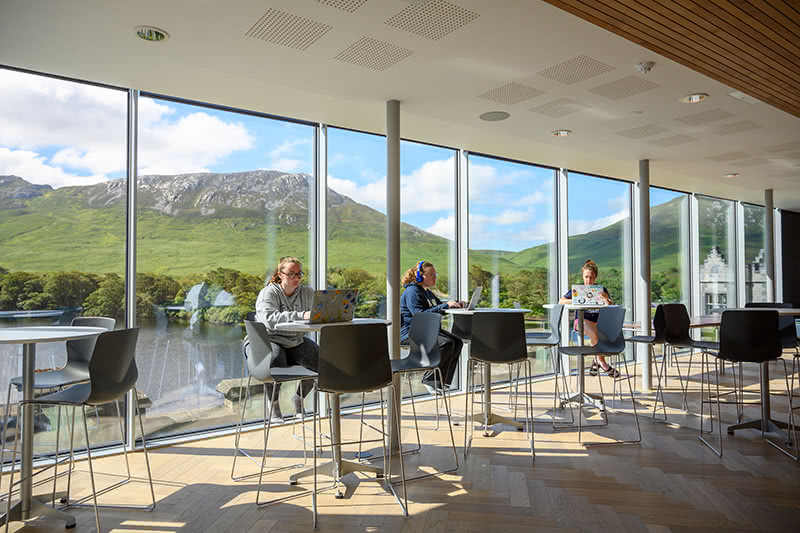
In 2015, Notre Dame entered into a partnership with the Benedictines, establishing the Kylemore Global Centre. The relationship benefits from a mutual history and current commitment to education: In Ypres, the community operated a boarding school for Irish women during times of Catholic persecution in Ireland. This common history helps to animate the relationship between the University and the order today, giving an added dimension to the University’s physical presence.
“It is a genuine partnership, and the Benedictines have a genuine interest in the work we do here,” Caulfield said. “I’m always amazed at their appetite for the knowledge that we can share with them through the courses we offer. They’re always interested in the work that we share with our students and the learning that we do here.”
The students in turn participate in aspects of the monastic life as well by joining the community for daily prayer and regular Mass. More than that, Caulfield noted how the order provides an inspiring example of fortitude and persistence for the students: a community of women eking out an existence in the remote Connemara mountains. While the castle-like abbey may seem like an ideal setting, it is not necessarily fit for the purposes of an enclosed monastic order, and is still in the middle of nowhere, and like the people who live in this area the nuns had to build relationships with their (often far-flung) neighbors for basic needs, or fend for themselves.
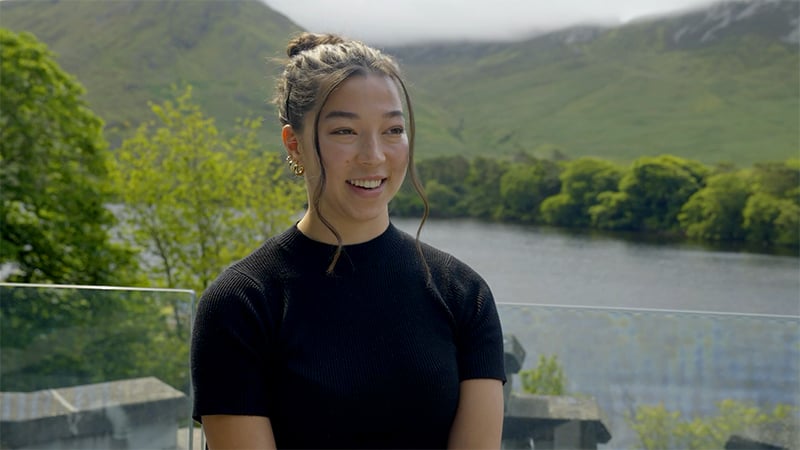
Yet upon visiting Kylemore, there is an immediate sense that this sort of voluntary solitude is exactly the point. The spot is the most popular tourist destination in western Ireland, so on any given day the site is abuzz with massive charter buses that precariously made their way along narrow rural roads — carefully avoiding the sheep that freely roam in the absence of fences or guardrails — to deposit tourists eager to take in the breathtaking beauty and perhaps pick up something from the gift shop, which features chocolates, soap and more made by the nuns on-site. But the draw isn’t just the aesthetic; it’s also the ascetic. Even the people joining the large tour groups are hoping for a taste of the quiet that allows for reflection and clarity. For the Notre Dame students who come here, it also affords real community with each other and with this place. “That’s the biggest thing that we can offer in a partnership with the Benedictines,” Caulfield said. “The opportunity to engage with Irish culture and heritage and history in an authentic way. That’s something unique that we can give our undergraduates, our faculty and anyone who comes to visit.”
Like the Dublin Global Gateway, the Kylemore Global Centre hosts a students and scholars from a variety of academic disciplines. Engineers, scientists, writers, painters, theologians — all of them convene at Kylemore to find the space to advance their studies or their work. Recently, this portfolio of offering was bolstered by a partnership with the National University of Ireland, Galway (NUIG), which is partnering with Notre Dame’s Harper Cancer Research Institute to study skin cancer in western Ireland. “I move from a world of vulnerability with the artists to a world of security with engineers,” Caulfield said. “We need them both. I see it as my mission to perhaps take a prism to both and turn it at an angle in such a way that we can understand other disciplines just a little bit better to help our own.” It’s a perspective most people gain more easily in the absence of distraction, which makes the setting of Kylemore ideal for the purpose. Here, there is a wonderful paradox of being isolated and thus finding the ways in which we are all in community.
The students here embark on hikes and excursions that take them to some of the most remote parts of the Irish countryside, testing the quality of their hiking boots and, at times, their mettle. The persistent rain is a fact of life here, and has a way of changing the threshold of comfort some students had before they arrived. Caulfield calls it “Fun A” and “Fun B” — the best-laid plans for a scenic hike are often belied by the weather, but it is in those instances that students become more at one with each other and their unique setting.
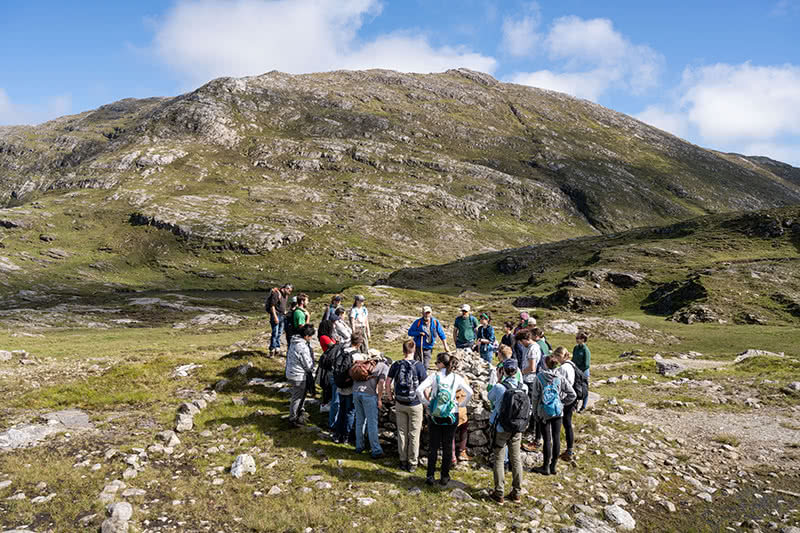
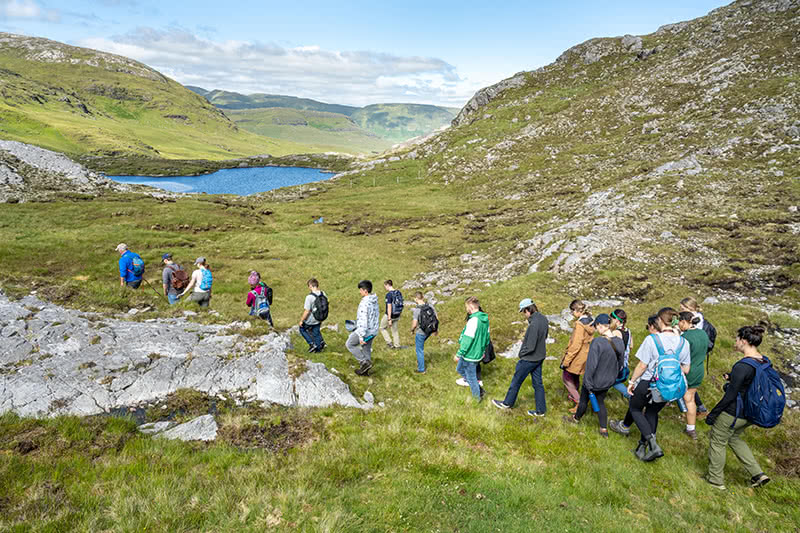
This dynamic is at the heart of a central element of the work at Kylemore for both the Benedictines and the University: environmental stewardship. The Connemara region features a vast array of habitats, and diligence is required to steward the land responsibly, especially given its status as a popular tourist destination. Notre Dame has partnered with NUIG in this area as well through a multifaceted approach including invasive species removal, food waste management, protective measures for wildlife and more. Moreover, many Notre Dame students here take a course in contemplative ecology, a framework for understanding the science of caring for the environment through the lens of faith, especially Pope Francis’ encyclical Laudato Si’.
In sum, these efforts from cancer research to environmental stewardship add a new dimension to the University’s presence in the country, and provide more examples of the tenet that Whelan spoke about: Notre Dame is interested in what the Irish people are interested in.
“I think our presence here really makes us a global university,” Caulfield said. “If we can show our connection to the land, our commitment to the people that we work with locally and our duty of care that we have with them, that’s something that people will recognize.
“A lot of people identify with Ireland. We have a responsibility to give back to the country that gave so much to the rest of the world.”
